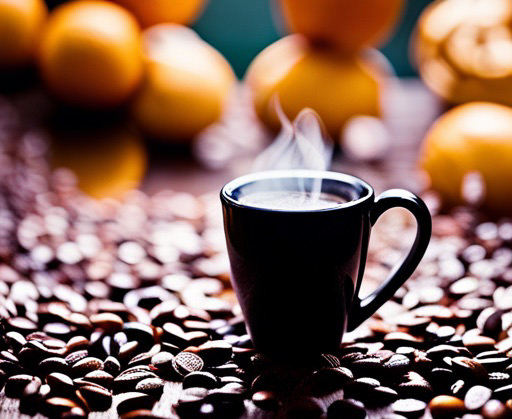When we talk about Mexican coffee, we might be referring to two distinct concepts. The first one is simply the coffee beans that are grown in Mexico. Mexico has a significant coffee industry, and it is one of the largest coffee producers in the world. The coffee-growing regions are mainly located in the South of the country, in places like Chiapas, Veracruz, and Puebla. Each region’s specific microclimate contributes to the unique flavors and characteristics of the coffee produced there. Generally, Mexican coffee beans are known for their light to medium body with mild acidity, often featuring a smooth, well-balanced taste with nutty, chocolatey, or fruity notes.
The second concept of Mexican coffee refers to a specific way of preparing coffee known as “Café de Olla”. This is a traditional beverage that has been part of Mexican culture for centuries, originating during the Mexican Revolution. It is unique not just because of its ingredients but also due to the traditional method of preparation. The coffee is brewed in an earthen clay pot, which is believed to impart a distinctive flavor to the brew. The coffee is typically prepared with cinnamon and piloncillo (unrefined cane sugar), and sometimes other spices or ingredients like orange peel or anise are added. This method produces a warm, comforting brew that is much more than just coffee — it’s a rich, sweet, and spicy drink that is deeply intertwined with Mexican heritage.
Flavor Profile: Mexican coffee beans, particularly those from regions like Chiapas or Veracruz, are generally known for their light to medium body with mild acidity, often featuring nutty, chocolatey, or fruity notes. They’re typically well-balanced and smooth.
Café de Olla: This is a traditional Mexican method of preparing coffee. It’s unique because of its preparation in a clay pot, which is said to add a unique flavor to the coffee, and the addition of spices like cinnamon and piloncillo (unrefined cane sugar), which give the coffee a sweet and spicy kick.
Here’s a basic recipe for Café de Olla that you can try at home:
Ingredients:
- 4 cups of water
- 3-4 tablespoons of ground coffee (preferably Mexican)
- 1-2 cinnamon sticks
- 3-4 ounces of piloncillo or 1/2 cup of dark brown sugar as a substitute
- Optional: a few cloves, star anise, or orange peel
Instructions:
- Add water, cinnamon sticks, and piloncillo (or brown sugar) to a pot. Bring to a boil and then simmer until the sugar has dissolved completely.
- Add your ground coffee to the pot and stir.
- Remove the pot from heat and let the coffee steep for about 5 minutes.
- Pour the coffee through a strainer or a coffee filter to separate the grounds and the cinnamon sticks.
- Serve the coffee hot and enjoy!
Remember, the specific ratio of coffee, sugar, and spices can be adjusted to your personal preference. Enjoy experimenting with this unique coffee preparation!
Please note that even though the recipe suggests using a regular pot, traditionally Café de Olla is made in a clay pot, as it is believed to give the coffee a special flavor. If you have access to a clay pot and are interested in making it the traditional way, you certainly can. However, even without the clay pot, you’ll still get a deliciously unique cup of coffee.


